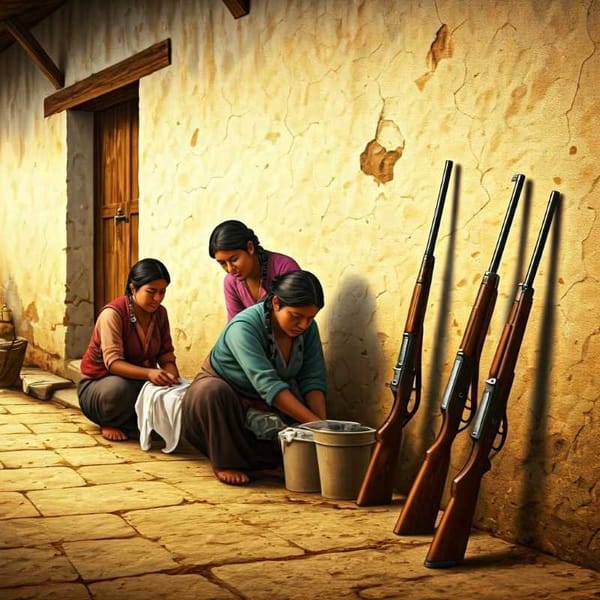Mexican Basketry: Weaving the Roots of Mexico's Pre-Hispanic Legacy
Discover the rich cultural heritage of Mexico's pre-Hispanic legacy through the art of basketry. Learn about the traditional craft and how it preserves the indigenous worldview. Support local artisans and help ensure the continued existence of this unique craft.

Mexico's pre-Hispanic legacy is alive and well in its basketry, a craft that has been passed down from generation to generation for centuries. The Aztecs, for instance, had weavers in Cuautitlán who made petates or mats. The weavers were obligated to present them as a tribute to the tlatoani or king. They had to be competent in selecting the best leaves and in weaving them into mats.
Basketry is one branch of the craft where indigenous expression prevailed. The use of materials, tools, techniques, forms, and decorations of pre-Columbian origin continues to dominate. The introduction of materials such as wheat straw, rice, and barley was the only Hispanic influence. This is evident in the geographic location of those who work with vegetable fibers, which are mainly in Jiquipilco, Temascalcingo, Tenancingo, and Toluca in the State of Mexico.
The artisans who work with vegetable fibers are, for the most part, members of indigenous peoples. They use natural or aniline-dyed fiber to make tortilla holders, bags, and placemats, among other articles. Creativity is evident in combining shapes and designs with different shades of the fiber. It is a way of expressing a specific cosmovision or worldview.
In Amanalco, Donato Guerra, and El Oro, basketry includes applications of high-temperature ceramics, nickel-plated brass, and glass. These products are a fusion of pre-Columbian and modern techniques. They reflect the creative genius of the artisans and their ability to adapt to changing times.
The Art of Basketry
Basketry is a traditional craft that involves weaving materials such as leaves, grasses, and fibers into baskets, mats, bags, and other items. The craft has a long and rich history in Mexico, dating back to pre-Columbian times. It is a way of expressing the indigenous worldview and preserving cultural heritage.
The craft requires skill, patience, and creativity. The weavers must select the best materials and prepare them for weaving. They must also have an eye for design and be able to combine different shapes and colors to create a harmonious whole.
The materials used for basketry vary depending on the region and the artisan. In some regions, palm leaves, sedges, and other fibers are used. In other regions, grasses and reeds are used. The weavers must know how to prepare the materials for weaving, including drying, soaking, and stripping them of their outer layers.
The techniques used for basketry are also varied. Some weavers use coiling techniques, where the material is coiled into a spiral and sewn together. Others use plaiting techniques, where the material is woven in and out of itself. Still, others use twining techniques, where two or more strands of material are twisted together to create a strong cord.
Preserving Cultural Heritage
Basketry is not just a craft; it is also a way of preserving cultural heritage. The craft has been passed down from generation to generation, and each artisan puts their unique spin on it. By continuing to practice the craft, artisans are keeping alive the indigenous worldview and cultural heritage.
In addition to preserving cultural heritage, basketry also provides economic opportunities for artisans. Many artisans rely on basketry as their primary source of income. By supporting local artisans, consumers can help to preserve the craft and the cultural heritage it represents.
Conclusion
Basketry is a traditional craft that has been passed down from generation to generation in Mexico. It is a way of expressing the indigenous worldview and preserving cultural heritage. The craft requires skill, patience, and creativity, and it provides economic opportunities for artisans. By supporting local artisans, consumers can not only help to preserve the craft but also support the livelihoods of the communities where the craft is practiced.
As the world becomes more globalized, traditional crafts such as basketry face the risk of being lost. However, by recognizing their cultural significance and economic value, we can help to ensure that they continue to thrive. By supporting local artisans and purchasing their products, we can help to preserve the craft and the cultural heritage it represents.
Basketry is a craft that is deeply rooted in Mexico's pre-Hispanic legacy. Its continued practice serves as a reminder of the country's rich cultural heritage and provides economic opportunities for artisans. By recognizing the cultural significance and economic value of traditional crafts such as basketry, we can help to ensure their continued existence for future generations to appreciate and enjoy.
In-Text Citation: Artesanía Mexiquense, La Magia De Nuestra Gente. 1st ed., Mexico, Gobierno del Estado de México, 2006.




